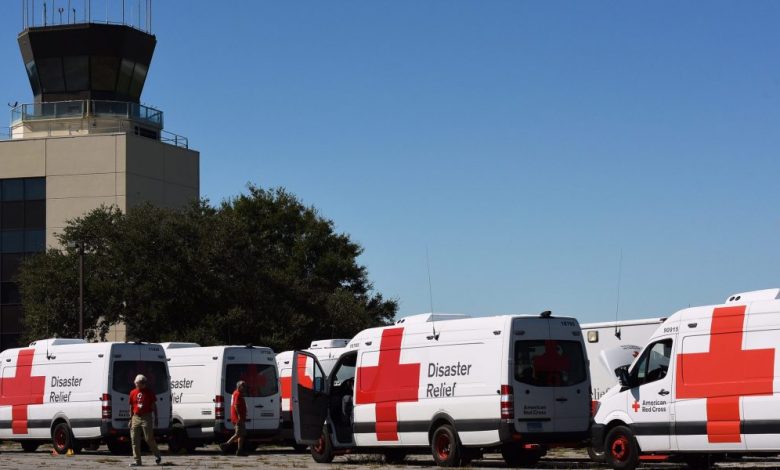What the digital transformation at the American Red Cross looks like — and how it could make a difference for nonprofit organizations across the country

Digital transformation typically aims to increase both efficiency and profitability by using artificial intelligence to automate repetitive tasks, freeing human workers to focus on higher-level challenges. While these technological upgrades require an upfront investment, companies believe they will pay off in the long run in improved performance and financial returns.
But what motivation does a non-profit organization need to have to drive digital transformation forward? By definition, a nonprofit organization shouldn’t be concerned with maximizing revenue and profit margins. In theory, we should feel less urgency to pursue some of the same technologies that are being implemented by for-profit corporations.
At my organization, the American Red Cross, we have found that digital transformation efforts have played a large role in our ability to fulfill our mission. While we are not concerned with maximizing profits, our pursuit of technology, innovation and efficiency helps us instead maximize our stewardship of donated resources and create better outcomes for those in need.
Streamline fundraising
Humanitarian organizations like the American Red Cross are constantly raising funds to help those in need. However, the rates at which people donate can be unpredictable. Nonprofit organizations with significant humanitarian missions will often find their donations skyrocketing in response to a major disaster. And while this influx of public support is critical to delivering the needed assistance, it also puts immediate pressure on the nonprofit’s technology systems.
We refer to these differences in donation rates as “blue” and “grey” periods. During a blue sky season, there are few major disasters that require humanitarian assistance. We see a constant level with comparatively low contributions. In times of gray skies, when people are donating in response to one or more disasters, donations increase dramatically – as does our web traffic. The difference can be astounding: a year of multiple major disasters could raise four to five times more donations than a year of blue skies and minimal crises.
Of course we hope every year for blue skies and no tragedies. However, the reality is that our organization must be prepared for both extremes. A blue sky year will be more manageable in terms of bandwidth, but will leave us with fewer financial resources to complete our mission. A gray sky year will challenge our team to keep up with humanitarian needs while keeping our online systems running smoothly. Digital transformation makes it possible to both streamline operations during blue sky periods (to ensure every dollar donated goes further) and predict the massive traffic spikes associated with gray sky periods.
Our ability to facilitate donations directly impacts the amount of assistance we can provide during a crisis. If we can improve the performance of our donation pages, the result will be more blankets, water bottles, food and supplies for those who need it most.
The most important aspect of our company’s digital transformation was preparing for sudden traffic spikes. In the immediate aftermath of a major disaster, the American Red Cross IT team might only have 30 minutes to prepare for a massive surge in traffic. In some cases, our traffic increases by 30x – a month’s worth of traffic in a single day.
To help manage these high-traffic events, the American Red Cross has deployed observability tools to monitor the surge and allocate resources accordingly. These solutions allow our IT teams to avoid bottlenecks and improve the overall performance of our website, prevent outages during emergencies, and deliver faster load times when things are quieter.
Use new opportunities
Flagship services like our blood donor app and the systems that mobilize millions of volunteers across the country make it possible to get help to those in need faster and more efficiently.
The American Red Cross’s investments in digital transformation have resulted in the creation of a new constituent support platform through which people affected by disasters can submit requests for financial assistance and, where eligible, receive digital payments from the American Red Cross through our Emergency Response Program.
This platform has streamlined our business processes, allowing us to help those in need much faster, with greater privacy and security, and with a more effective transition to long-term relief and support services.
It’s time for nonprofits to take advantage of digital transformation. Cutting-edge technology shouldn’t just be the preserve of big companies – we can all take our organizations into the 21st century and deliver the best possible outcomes for those who need our support.
With climate change, conflict and the global pandemic dominating world news, the work of nonprofits has been more important than ever. If nonprofits can champion digital transformation—and if leading technology companies can amplify those efforts in kind—we can greatly scale up the good work that’s been done to help those who need it most.
Matthew Cascio is the Director of Digital Transformation for the American Red Cross.
The opinions expressed in Fortune.com Comments are solely the views of their authors and do not necessarily reflect the opinions and beliefs of wealth.
More must-read comments posted by wealth:
Our new weekly Impact Report newsletter explores how ESG news and trends are shaping the roles and responsibilities of today’s leaders. Subscribe here.



